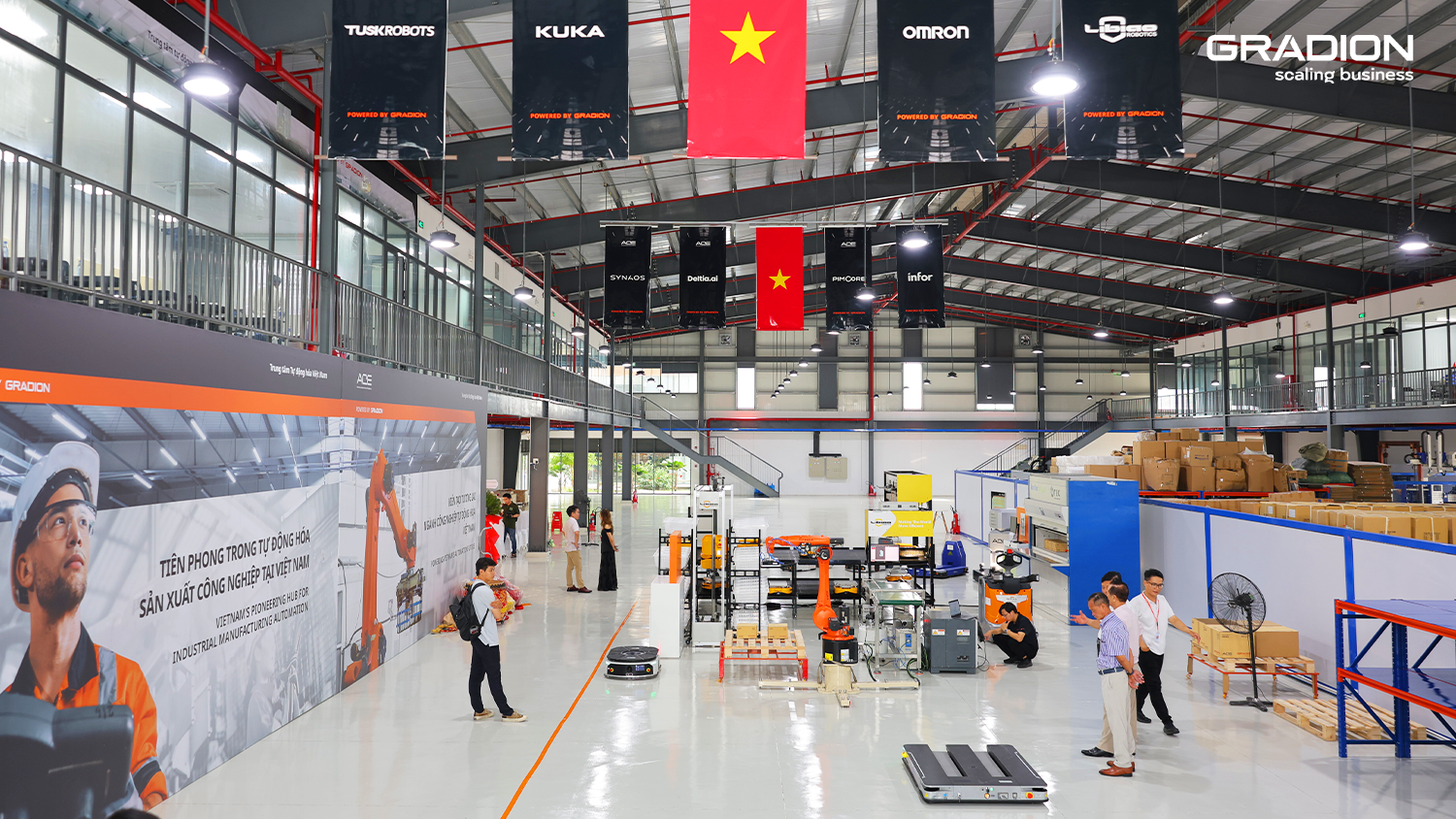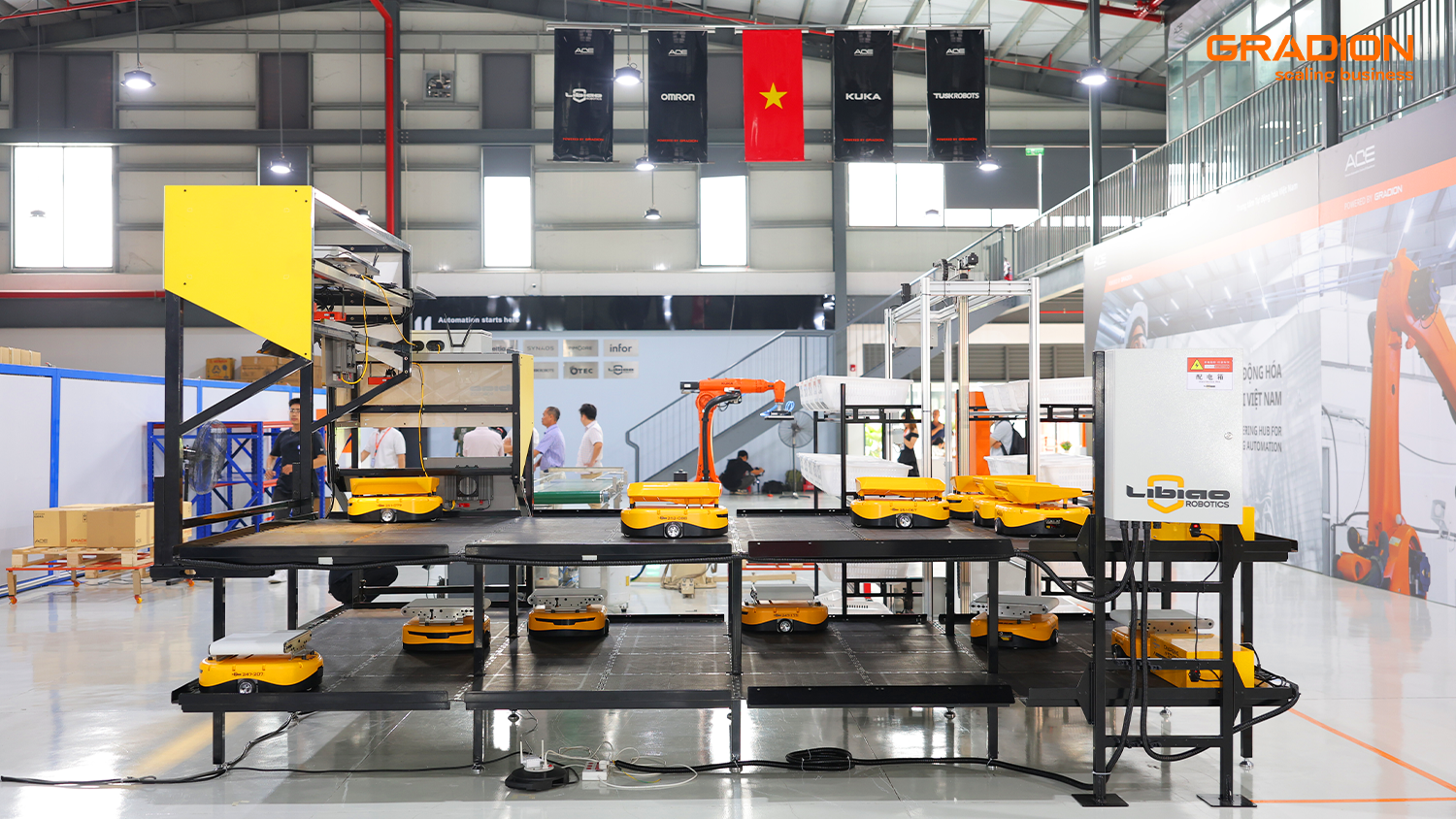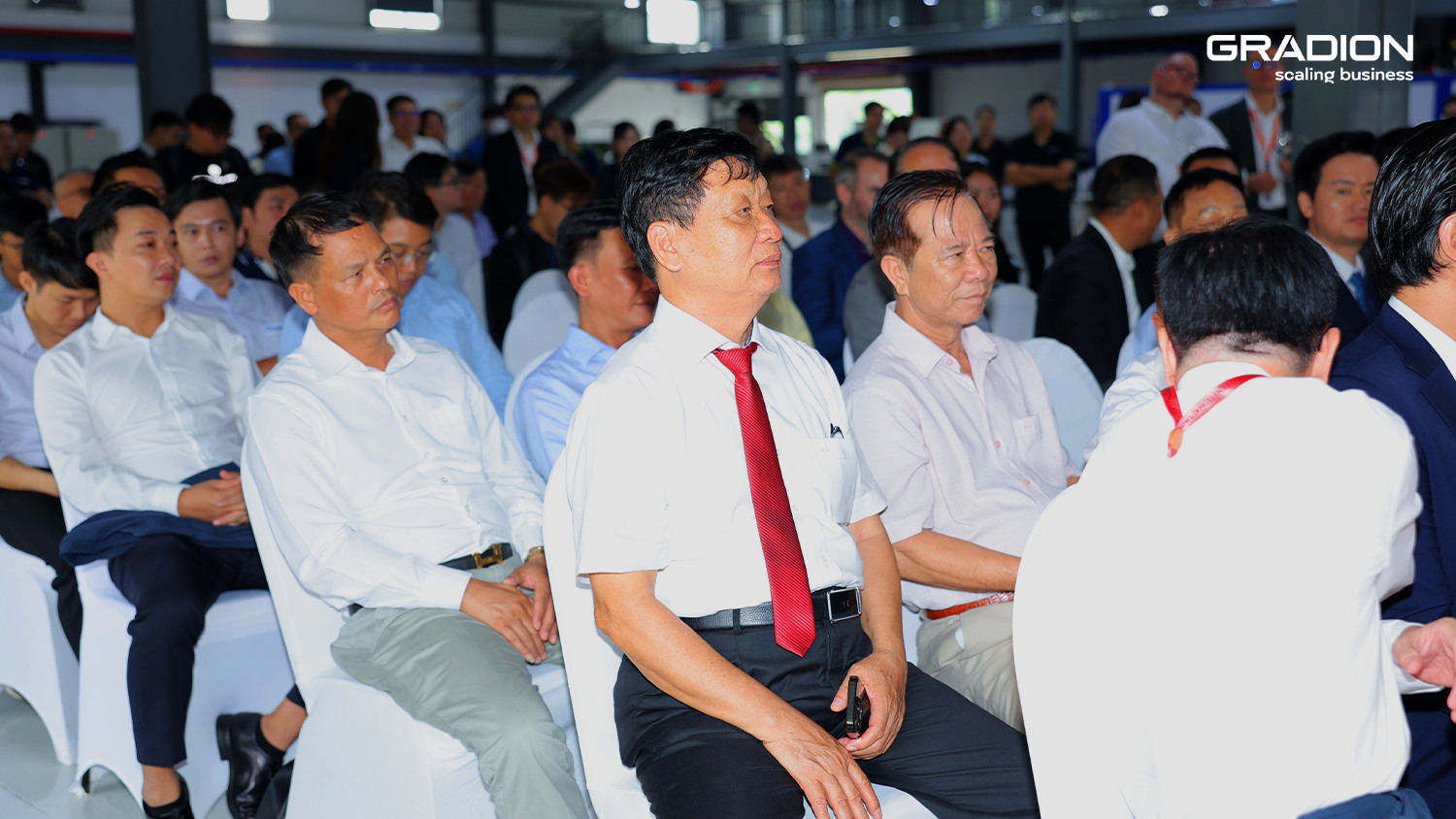FROM RESOLUTION TO REAL ACTION:
VIETNAM AUTOMATION CENTER OF EXCELLENCE (ACE) AND EFFORT IN VIETNAM’S NATIONAL TECHNOLOGY AND AUTOMATION STRATEGY
As Vietnam sets ambitious goals for digital transformation and a technology-driven economy under Resolution 57 and the Industry 4.0 national strategy, the fact that A large number of factories continue to operate using obsolete technologies 1. It calls for great efforts and commitment from the business in cultivating a long-term, proactive approach to industrial transformation.
A practical question: Where should transformation begin?
In December 2024, the Politburo issued Resolution 57 that identified science, technology, innovation, and digital transformation as a top strategic breakthrough for national development. In parallel, Decision No. 2114/QĐ-TTg on the National Strategy for Industry 4.0 laid out ambitious goals: digital economy contributing 30% of GDP, over 40% of businesses engaged in innovation, and high-tech exports accounting for at least 50% of total export value 2.
In addition, to meet global standards and respond to new international trade barriers, businesses are compelled to shift towards modern, automated, and environmentally friendly production processes. A prime example is the EU’s Carbon Border Adjustment Mechanism (CBAM) and the high tariffs from the United States, which are creating urgent requirements for restructuring production models 3. The workforce challenge makes the situation even more pressing: up to 53% of domestic enterprises face difficulties in recruiting highly skilled workers 4. Without upgrading, enterprises risk losing their competitive edge in the global market.
In a context where more than 85% of manufacturing facilities in Vietnam still rely on manual labour, the urgent question is: where should transformation begin? Reducing manual processes and increasing automation in industrial zones is not a challenge that can be solved overnight, especially without the right direction or a focus on the true bottlenecks. The shift transformation cannot be achieved by only focusing on machinery or productivity. It requires reshaping entire ecosystems from business mindsets to how companies access and adopt technology.

Vietnam Automation Center of Excellence ACE:
Kickstarting the smart manufacturing journey
The launch of the Vietnam Automation Center of Excellence (ACE) on September 8, 2025, in Binh Duong marks an important milestone in advancing Vietnam’s industrial transformation goals. While ACE has yet to directly support any Vietnamese enterprise during its pilot phase, it is the pioneer public–private initiative of its kind in Vietnam, aiming to help manufacturers access, experiment with, and deploy automation and AI technologies in real-world production environments. It is something that would otherwise be prohibitively complex and costly for individual businesses to undertake alone.
What sets ACE apart is its practical nature. It is an open ecosystem that allows businesses to experience the future of smart manufacturing. The testbed production lines at ACE replicate real-world operating conditions, where robots, AGVs, warehouse management systems (WMS), manufacturing execution systems (MES), and AI dashboards are interconnected, synchronized, and running continuously. Enterprises can directly observe, experiment, fine-tune, calculate return on investment (ROI), and scale solutions when appropriate.
With this approach, ACE not only simulates the vision of the future smart factory but also acts as a catalyst for the broader industrial sector, accelerating Vietnam’s progress into an era of technology-driven, high value-added manufacturing.

Joining the next era with practical steps
From proven models and data from global cases such as Foxconn in Bac Giang, VinFast in Hai Phong, a Gradion pilot project, and an SME productivity improvement programme by Samsung in partnership with the Ministry of Industry and Trade, the real results are undeniable. These cases clearly demonstrate that automation delivers real, measurable improvements in productivity, cost reduction, waste minimisation, and return on investment.
Given that global supply chains impose stricter requirements on origin, environmental compliance and operational efficiency, adopting modern technologies has become an existential need for Vietnamese manufacturers. Locating ACE in Binh Duong, Vietnam's southern industrial hub, shows a commitment to begin from the ground up, grounded in factory realities rather than abstract theory.
At the launch ceremony, Mr. Kien Nguyen, Head of Industrial Solutions at Gradion – the operator of the ACE shared: “This marks an important milestone for us. Driving and supporting the automation journey of enterprises demonstrates Gradion’s long-term commitment to the advancement of automation in Vietnam. The ACE will serve as the first open-ecosystem platform, acting as a bridge between factories, robot suppliers, and technology partners to implement advanced solutions. Through this, we are also joining hands with the Government and businesses on the path toward more sustainable industrial development.”
Global Partner Ecosystem:
Completing the Future Factory Puzzle
At ACE, the ecosystem brings together leading global players in manufacturing technology. From industrial robotics providers such as KUKA, OMRON, and TuskRobots, to real-time fleet management and localization platforms like SYNAOS, and AI and vision innovators like Deltia, each partner represents a critical piece of the smart factory of the future.
What makes ACE unique is that these solutions are not presented as isolated demos, as in typical showrooms or trade fairs, but are integrated and operated in a real production-like environment. This allows manufacturers to experience first-hand how robotics, management systems, and AI-powered solutions work seamlessly together, providing a tangible view of the efficiency and value of a modern production line.
This open ecosystem not only gives manufacturers broader choices and helps avoid vendor lock-in, but also embodies the spirit of cross-border collaboration and innovation – where global technologies are localized and tested directly in Vietnam.

Bridging the talent gap with a long-term vision
An equally pressing challenge is the talent shortage. In the era of smart manufacturing, engineers must not only master mechanics or electronics, but also data literacy, system integration, and cross-functional operations. The current lack of professionals who both understand technology and can implement it is a bottleneck for many companies.
By embedding training into its mission, ACE aims to shape a new generation of engineers who will be leaders capable of driving transformation across industries.
The choice of Binh Duong as ACE’s base is also strategic. As one of Vietnam’s leading industrial provinces, home to thousands of factories across electronics, machinery, textiles, wood, and logistics, Binh Duong provides the perfect launchpad for real-world application and regional diffusion.
While ACE alone will not solve all the challenges facing Vietnam’s manufacturing sector, its launch marks a necessary and timely starting point. It sends a clear message that local enterprises are not navigating this transformation alone. But to meet the targets set out in Resolution 57 and the national Industry 4.0 roadmap, what lies ahead is a series of steady, well-timed and carefully implemented moves.
###
Sources:
(1) Government Newspaper, Old Technology Factory and the Green Transformation Problem (Old Technology Factories and the Green Transformation Challenge), (https://baochinhphu.vn/nha-may-cong-nghe-cu-va-bai-toan-chuyen-doi-xanh-102250711212840412.htm)
(2) Government Electronic Newspaper, Full Text: Resolution 57-NQ/TW on Breakthrough Development of Science, Technology, Innovation and National Digital Transformation, (https://xaydungchinhsach.chinhphu.vn/toan-van-nghi-quyet-ve-dot-pha-phat-trien-khoa-hoc-cong-nghe-doi-moi-sang-tao-va-chuyen-doi-so-quoc-gia-119241224180048642.htm)
(3) Industry and Trade Magazine, EU CBAM mechanism and recommendations for Vietnam (The EU CBAM Mechanism and Recommendations for Vietnam), (https://tapchicongthuong.vn/magazine/co-che-cbam-cua-eu-va-khuyen-nghi-giai-phap-cho-viet-nam-107633.htm)
(4) Hanoi Radio, Businesses lack highly skilled workers (Businesses Face Shortage of Skilled Labor), (https://hanoionline.vn/doanh-nghiep-thieu-hut-lao-dong-tay-nghe-cao-334221.htm)
